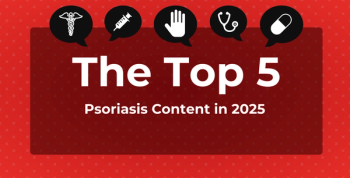
Predictive Model Can Assess Risk of Febrile Neutropenia in Patients Undergoing Chemotherapy for DLBCL
Investigators used a predictive model factoring in lymphopenia, elevated SIL2R level, extranodal involvement, and a positive hepatitis panel to determine risk for febrile neutropenia among patients with diffuse large B-cell lymphoma (DLBCL).
A novel predictive model can assess the risk of febrile neutropenia (FN) before patients with
FN is a common and serious clinical condition that can occur during a cyclophosphamide, doxorubicin, vincristine, and prednisone (CHOP) regimen with added rituximab (R-CHOP), which is currently the standard treatment for DLBCL. FN can progress rapidly and reduce treatment effectiveness, the investigators wrote.
Many risk factors have been identified for FN in patients with lymphoma, including advanced age, advanced disease, and abnormal bone marrow. Additionally, over half the patients who develop FN have an episode during their first cycle of chemotherapy.
Due to these factors, the investigators aimed to develop a predictive model for FN development in the first cycle of R-CHOP regimen in those with DLBCL. Developing a model based on risk factors prior to therapy would improve the overall prognosis of patients with DLBCL.
The primary endpoint for the retrospective, multicenter cohort study was incidence of FN during the first cycle of chemotherapy for DLBLC. The secondary endpoint was the incidence of FN during any cycle of chemotherapy, not just the first, the investigators wrote.
A total of 134 patients from Kinan Hospital and 112 patients from St. Luke’s International Hospital in Japan were included in the study. Of the 246 patients with DLBLC, 194 received only R-CHOP-like therapy and 52 received at least one salvage therapy, according to the investigators.
Intensity of chemotherapy was significantly associated with FN incidence during any cycle of chemotherapy (R-CHOP-like therapy: 33.0% [n = 64]; salvage therapy: 70.6% [n = 36]; P < 0.001). Of the total patients, 100 developed FN at least once during the treatment cycles, with 45 (46.0%) developing it during the first treatment cycle, the investigators found.
The investigators used a multivariate logistic regression analysis to identify 4 predictors for the model, which were lymphopenia, elevated SIL2R level, extranodal involvement, and a positive hepatitis panel. These factors were used to calculate a score indicating risk of developing FN in patients with DLBCL, with a total score of 0-1 points indicating a low probability of developing FN.
The study results indicated that a positive hepatitis panel is a significant risk factor for FN occurrence in the first cycle of chemotherapy in patients with DLBCL, which the investigators wrote has important clinical implications.
Additionally, positivity for hepatitis C virus or the core antibody of hepatitis B was significantly associated with FN development, the investigators found. To the best of the investigator’s knowledge, there has been previous study that has shown a correlation between hepatitis viral status and FN development.
Lymphopenia was another important prognostic factor for the entire study population. The investigators wrote that the causality of this correlation is unknown, but lymphopenia is clinically crucial in the development of infectious diseases and FN in patients receiving chemotherapy treatment.
The predictive model that the investigators developed yielded an area under the curve (AUC) that indicated a relatively high level of accuracy (AUC = 0.844; 95% CI, 0.777-0.911), while the incidence rate of FN was significantly low (3.7%) among patients whose total model score was 0-1 points, the study authors discussed.
Multiple limitations of the study were indicated by the study authors. The study participants were selected from only two facilities, although there was a large difference in the mean ages of the patients from each hospital, which meant that the study population was diverse. Furthermore, assessing prophylaxis as a potential FN risk factor was challenging due to evaluating the outcome for each patient, rather than each treatment episode.
“Our findings suggest that patients with a low score (0–1 points) in this model can be transferred from inpatient to outpatient care relatively earlier, without the need for G-CSF administration,” the investigators concluded.
Reference
Morimoto M, Yokoya Y, Yoshida K, et al. Predictive model for occurrence of febrile neutropenia after chemotherapy in patients with diffuse large B-cell lymphoma: a multicenter, retrospective, observational study. Hematol Rep. 2024;16(1):76-88. doi:10.3390/hematolrep16010008
Newsletter
Stay ahead of policy, cost, and value—subscribe to AJMC for expert insights at the intersection of clinical care and health economics.








































